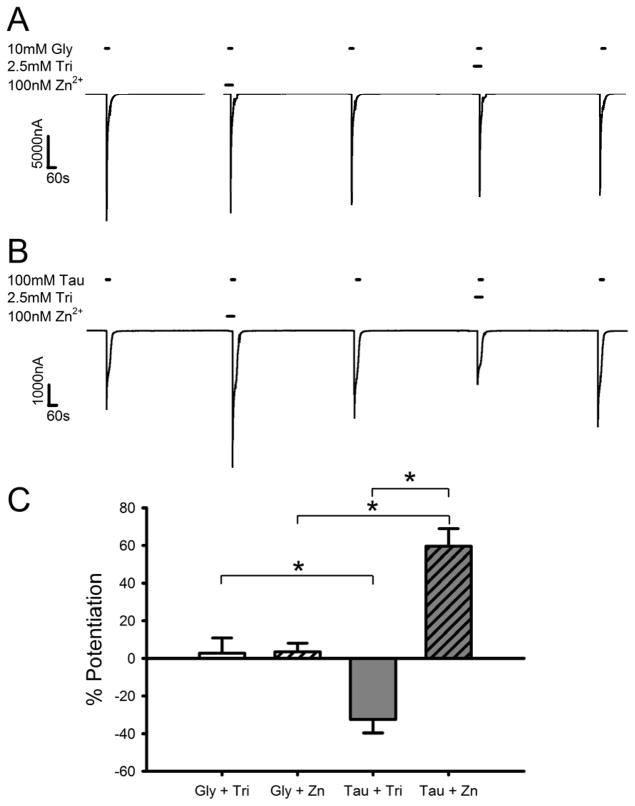Fig. 1.
Zn2+ affects currents elicited by maximally-effective concentrations of taurine but not glycine. A) Sample tracings showing the effect of a maximally-effective concentration of glycine applied in the presence or absence of Zn2+. The tracing shows 15 s co-applications of 10 mM glycine with either 2.5 mM tricine or 100 nM Zn2+ following a 30 s preincubation with tricine or Zn2+. Each of these applications was preceded and followed by applications of 10 mM glycine alone in buffer containing background levels of Zn2+. Horizontal bars over tracings indicate time of exposure to glycine, tricine, or Zn2+. Washouts 10 min in duration separated agonist applications. B) Sample tracing showing the effect of a maximally-effective concentration of taurine applied in the presence or absence of Zn2+. The tracing follows the same protocol as in panel A. Horizontal bars over tracing indicate time of exposure to taurine, tricine, or Zn2+. C) Summary of the effects of Zn2+ on brief applications of maximally-effective concentrations of glycine or taurine. The y-axis represents the percent current potentiation observed in the presence or absence of Zn2+ compared with that produced by glycine or taurine in background levels of Zn2+. Data are shown as mean ± S.E.M. of 9–11 oocytes. *, p < 0.05.

